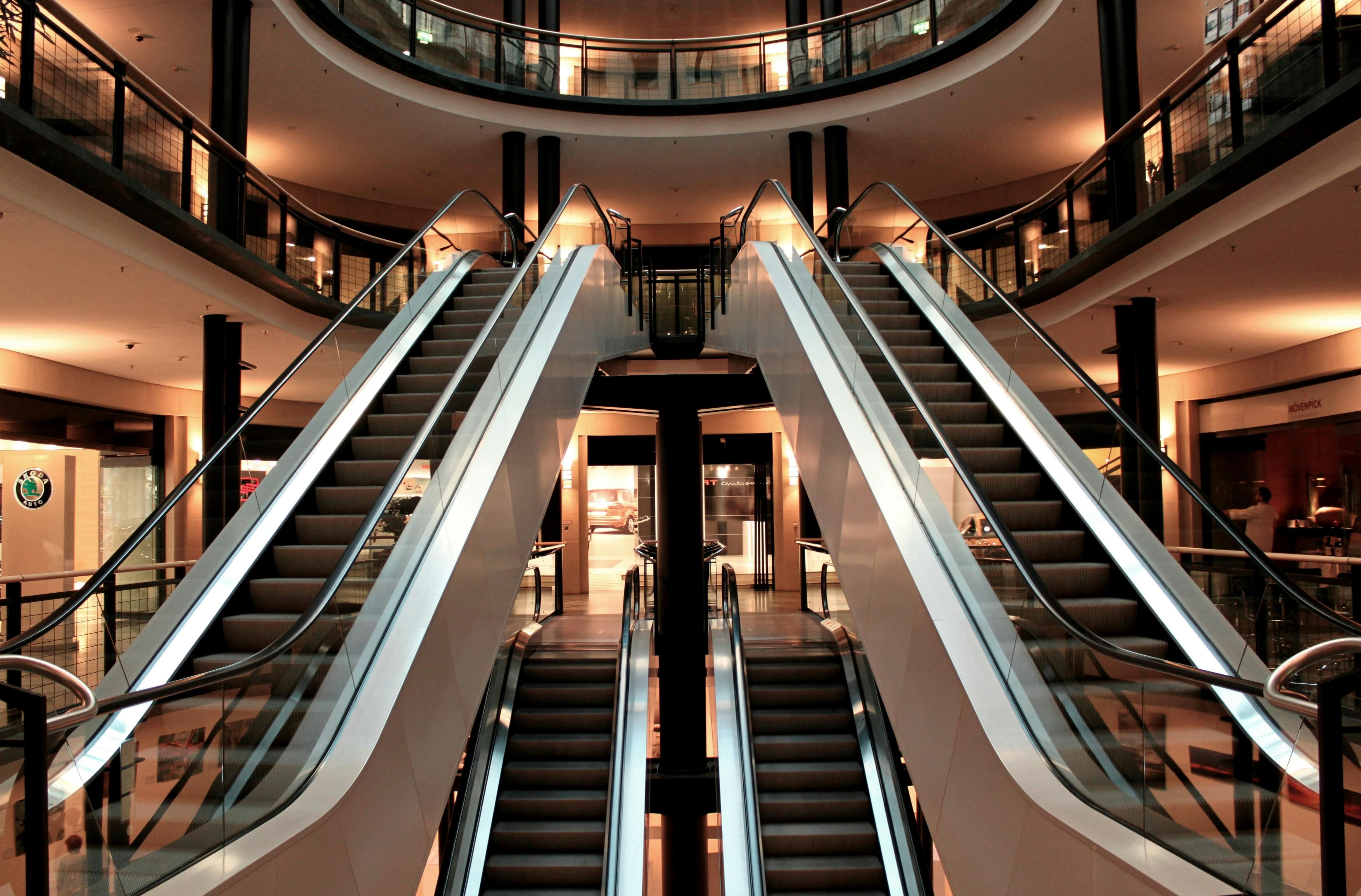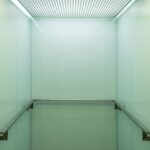Escalators play a crucial role in the modern commercial landscape, moving thousands of people every day in office towers, malls, airports, and metro stations. However, many property managers and developers underestimate how much these systems contribute to a building’s energy profile—and how much opportunity there is to improve both sustainability and operating costs through targeted modernization and efficiency upgrades. At Kaiser Elevator, we have worked closely with developers, architects, and property managers to help them identify and implement practical, cost-effective escalator upgrades that drive both immediate and long-term value.

Why Focus on Energy-Efficient Escalator Upgrades?
- Significant reductions in operating costs: Escalators can represent a noteworthy share of a building’s annual electric bill, especially in properties with extended hours or high foot traffic. Efficiency upgrades quickly translate to substantial savings, especially as utility costs continue to rise.
- Sustainable asset management: Energy efficiency is becoming a baseline expectation—not just for green certifications like LEED or BREEAM, but also for investors, tenants, and the public. Every kWh saved helps properties stand out as environmentally responsible and future-ready.
- Lifecycle value: Upgraded escalators are more reliable, quieter, safer, and easier to maintain. This enhances tenant comfort and trust while reducing the likelihood of disruptive breakdowns or expensive emergency repairs.
- Compliance and risk management: As codes and standards evolve, modernizing escalator systems for efficiency often means improvements in overall code compliance and safety (such as alignment with ISO 25745 or local U.S./NYC standards—an area we at Kaiser Elevator prioritize in every project).
Key Energy-Efficient Escalator Upgrade Strategies
We have seen the most impactful sustainability improvements come from a combination of these targeted interventions:
1. Retrofitting LED Lighting
- Replacing traditional lighting on balustrades, comb plates, and signage with LED modules can reduce lighting energy use by up to 80% and virtually eliminate the hassle of frequent bulb changes.
- LEDs also produce less heat, positively influencing escalator motor cooling loads, especially in enclosed spaces.
2. Intelligent Standby Modes and Smart Controls
- Motion sensors and occupancy-based control systems allow escalators to slow down or pause entirely during low-traffic periods. Instead of running at full speed 24/7, these upgrades match escalator energy usage to real-world demand.
- Well-designed standby modes can cut power consumption by 20–40% during off-peak hours, with no compromise to convenience or safety for users.
3. High-Efficiency Motors and Drives
- Motor upgrades—especially variable frequency drives (VFDs)—deliver precise control over escalator speed and torque. These smarter drives reduce mechanical wear, improve energy use per passenger moved, and ensure smoother acceleration/deceleration.
- Newer drive technologies are not just about efficiency. They can help reduce operational noise and improve ride comfort, which is especially relevant for upscale or hospitality-focused properties.
4. Regenerative Drive Systems
- When escalators operate downhill (or stop), regenerative drives can convert kinetic energy that would otherwise be wasted as heat back into usable electricity for the building, contributing directly to overall energy savings—especially in very busy sites with high ridership in both directions.
5. Modular Component Upgrades
- Replacing or retrofitting key components—controllers, lighter steps, modern sensors—can reduce friction losses, optimize ramp-up performance, and maximize longevity without the need for a disruptive, full-system replacement.
- Targeted safety sensors and smarter diagnostic controls also help monitor usage patterns, track energy performance, and identify issues before they become major downtime events.

Our Approach: A Step-by-Step Guide to Escalator Modernization for Sustainability
Property owners often ask us where to start. What’s the right path from basic energy audit to tangible results? Here’s our stepwise approach at Kaiser Elevator:
- Comprehensive Assessment: We begin with a full inspection of your current escalator systems, evaluating not only existing energy performance but also reliability, safety compliance, and maintenance history.
- Data-Driven Planning: By mapping your building’s unique traffic flows, peak and off-peak patterns, and user expectations, we recommend a prioritized roadmap for upgrades—tailored to your budget and sustainability ambitions. Where feasible, we model anticipated energy reductions and payback periods for each intervention.
- Phased, Low-Disruption Installation: For most clients, modular upgrades make more sense than complete replacement. By swapping out lighting, drives, controllers, or steps in planned phases, we avoid unnecessary downtime for tenants and can often align with scheduled maintenance windows or capital projects.
- Post-Implementation Verification: After upgrades are commissioned, we help measure the energy savings and system performance improvements, providing documentation for LEED, BREEAM, or internal reporting as needed.
- Smart Maintenance for Longevity: Upgraded escalators—especially those with IoT-enabled diagnostics—are monitored for both efficiency and safety. This approach helps lock in savings for the long run and keep your property running smoothly.
Frequently Asked Questions from Developers and Property Managers
- How quickly can these upgrades be implemented?
- Most modular improvements, like LED retrofits or upgrading control panels, can be installed in 2–5 business days per escalator, often during off-peak hours. Larger interventions may require more scheduling, but rarely necessitate prolonged system downtime.
- What codes and standards should we anticipate for compliance?
- American standards (such as ASME A17.1 for escalators) and ISO 25745 for energy efficiency are key. At Kaiser Elevator, we ensure every upgrade not only optimizes performance, but also aligns the property with the latest safety and efficiency codes. If your building has special requirements—such as those impacting accessibility—see our dedicated coverage on ADA compliance and accessibility.
- Are these investments cost-effective for mid-size as well as large properties?
- Absolutely. Escalator energy upgrades deliver strong ROI for buildings of all sizes, especially when traffic patterns show pronounced peaks and quiet periods. In fact, savings from energy, maintenance, and extended component life often lead to 2-4 year paybacks—a win for both the bottom line and the environment.
Design, Compliance, and Market Value: Beyond Savings
While lowering operating costs is compelling, energy-efficient escalator upgrades also strengthen the business case for any property in several less-obvious ways:
- Improved tenant retention: Efficient, quiet, and smoothly-operating escalators enhance occupant experience, especially in high-profile commercial and hospitality spaces.
- Asset value and green certifications: Documented energy performance improvements contribute to LEED credits, attract ESG-driven investors, and help future-proof the asset against emerging regulatory pressure.
- Reduced schedule risk: Modular upgrades, as we deliver them, allow for flexible phasing and minimize tenant disruptions—helping owners avoid the problems of full escalator shutdowns or major construction requirements.
- Resale appeal: Demonstrable sustainability improvements in major vertical transportation systems act as selling points in commercial property transactions and marketing materials.

Integrating Escalator Upgrades with Whole-Building Sustainability Initiatives
We encourage property managers and developers to consider escalator modernization as part of a larger building performance conversation. By coordinating upgrades with projects involving elevators, lighting, HVAC, or building automation systems, we can surface additional synergies—such as demand response capability or central energy management dashboards.
If you are already evaluating elevator upgrades, or want to understand how elevator and escalator modernization strategies align, see our coverage on elevator modernization versus full replacement or key considerations for commercial modernization.
Conclusion: Transforming Escalator Efficiency into Real Asset Value
As sustainability and lifecycle value become non-negotiable priorities for commercial properties, energy-efficient escalator upgrades stand out as both a practical and high-return investment. Our approach at Kaiser Elevator blends code compliance, design flexibility, and value engineering to help you achieve your sustainability objectives with minimal project risk and maximum tenant satisfaction.
If you’re ready to reduce utility expenses, greenhouse gas emissions, and maintenance headaches—while improving user comfort and the market appeal of your property—consider partnering with Kaiser Elevator for your next vertical transportation modernization. Request a quote or consultation today and discover how we can elevate your sustainability journey.

